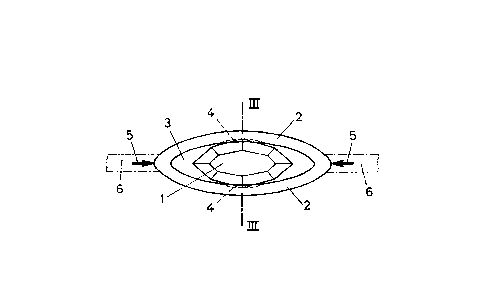Some of the information on this Web page has been provided by external sources. The Government of Canada is not responsible for the accuracy, reliability or currency of the information supplied by external sources. Users wishing to rely upon this information should consult directly with the source of the information. Content provided by external sources is not subject to official languages, privacy and accessibility requirements.
Any discrepancies in the text and image of the Claims and Abstract are due to differing posting times. Text of the Claims and Abstract are posted:
| (12) Patent Application: | (11) CA 2262501 |
|---|---|
| (54) English Title: | GEM HOLDER |
| (54) French Title: | SUPPORT DE PIERRE PRECIEUSE |
| Status: | Deemed Abandoned and Beyond the Period of Reinstatement - Pending Response to Notice of Disregarded Communication |
| (51) International Patent Classification (IPC): |
|
|---|---|
| (72) Inventors : |
|
| (73) Owners : |
|
| (71) Applicants : |
|
| (74) Agent: | SMART & BIGGAR LP |
| (74) Associate agent: | |
| (45) Issued: | |
| (86) PCT Filing Date: | 1997-08-07 |
| (87) Open to Public Inspection: | 1998-02-19 |
| Availability of licence: | N/A |
| Dedicated to the Public: | N/A |
| (25) Language of filing: | English |
| Patent Cooperation Treaty (PCT): | Yes |
|---|---|
| (86) PCT Filing Number: | PCT/AT1997/000184 |
| (87) International Publication Number: | AT1997000184 |
| (85) National Entry: | 1999-02-02 |
| (30) Application Priority Data: | ||||||
|---|---|---|---|---|---|---|
|
The present invention concerns a gem holder (1) comprising a seat for form-
closed setting of the gem and two flanges connected at both ends to form an
eye-shaped recess (3) for holding the gem (3). In order to manufacture the
jewel more easily, it is suggested that the gem resting in the two opposing
recess halves (4) of the one single-piece flanges (2) be clamped in the eye-
shaped recess through elastic flange pretensioning.
La présente invention concerne un support de pierre précieuse (1) comprenant un logement de blocage à liaison de forme et deux brides (2) reliées à leurs extrémités de manière à figurer ensemble un oeil de logement (3) pour la pierre. Pour simplifier la réalisation de ce bijou, il est proposé que la pierre de parure (1) prenant prise dans les deux cavités (4) se faisant face des brides (2) monobloc soit coincée dans l'oeil de logement par une précontrainte élastique des brides.
Note: Claims are shown in the official language in which they were submitted.
Note: Descriptions are shown in the official language in which they were submitted.

2024-08-01:As part of the Next Generation Patents (NGP) transition, the Canadian Patents Database (CPD) now contains a more detailed Event History, which replicates the Event Log of our new back-office solution.
Please note that "Inactive:" events refers to events no longer in use in our new back-office solution.
For a clearer understanding of the status of the application/patent presented on this page, the site Disclaimer , as well as the definitions for Patent , Event History , Maintenance Fee and Payment History should be consulted.
| Description | Date |
|---|---|
| Inactive: Dead - RFE never made | 2003-08-07 |
| Deemed Abandoned - Failure to Respond to Maintenance Fee Notice | 2003-08-07 |
| Application Not Reinstated by Deadline | 2003-08-07 |
| Inactive: Abandon-RFE+Late fee unpaid-Correspondence sent | 2002-08-07 |
| Classification Modified | 1999-04-06 |
| Inactive: IPC assigned | 1999-04-06 |
| Inactive: First IPC assigned | 1999-04-06 |
| Inactive: Notice - National entry - No RFE | 1999-03-22 |
| Application Received - PCT | 1999-03-19 |
| Application Published (Open to Public Inspection) | 1998-02-19 |
| Abandonment Date | Reason | Reinstatement Date |
|---|---|---|
| 2003-08-07 |
The last payment was received on 2002-06-14
Note : If the full payment has not been received on or before the date indicated, a further fee may be required which may be one of the following
Patent fees are adjusted on the 1st of January every year. The amounts above are the current amounts if received by December 31 of the current year.
Please refer to the CIPO
Patent Fees
web page to see all current fee amounts.
| Fee Type | Anniversary Year | Due Date | Paid Date |
|---|---|---|---|
| Registration of a document | 1999-02-02 | ||
| Basic national fee - standard | 1999-02-02 | ||
| MF (application, 2nd anniv.) - standard | 02 | 1999-08-09 | 1999-06-30 |
| MF (application, 3rd anniv.) - standard | 03 | 2000-08-07 | 2000-06-27 |
| MF (application, 4th anniv.) - standard | 04 | 2001-08-07 | 2001-06-27 |
| MF (application, 5th anniv.) - standard | 05 | 2002-08-07 | 2002-06-14 |
Note: Records showing the ownership history in alphabetical order.
| Current Owners on Record |
|---|
| SILHOUETTE INTERNATIONAL SCHMIED GMBH & CO. KG |
| Past Owners on Record |
|---|
| ANGELA STRECKER |